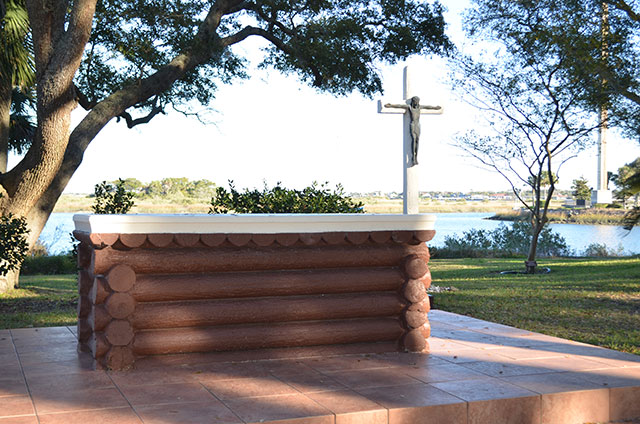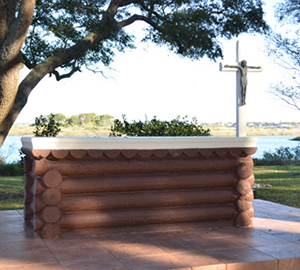
Rustic Altar
This rustic altar calls to mind the Mass of Thanksgiving offered here by Father Francisco Lopez de Mendoza Grajales, Diocesan priest and fleet chaplain, on September 8, 1565, the day the city of St. Augustine was founded. Gathered about the altar were Don Pedro Menendez de Aviles, Adelantado of Florida and Captain General of the Indies Fleet, with his colonists, soldiers and the Timucuans who lived on these shores before the Lord Christ was born.
John Gilmary Shea, historian and Christian humanist, reflects on that scene: "Mass was said to hallow the land and draw down the blessing of heaven before the first step was taken to rear a human habitation. The altar was older than the hearth."
Following Mass, Pedro Menendez hosted a feast for his companions and their new native friends. The Spanish would have served a stew made from salted pork and garbanzo beans, laced with garlic, and accompanied by hard sea biscuits and red wine. It is likely that the Timucuans would have contributed turkey, venison, gopher tortoise, mullet and other fish, corn, beans and squash. When noting the significance of the Mass and meal, noted historian Michael Gannon wrote in his book Cross in the Sand: “It was the first community act of religion and thanksgiving in the first permanent (European) settlement in the land.”
This thanksgiving meal was celebrated 56 years before the Puritan-Pilgrim thanksgiving at Plymouth Plantation (Massachusetts). Thus began the first permanent Christian settlement in what is now the United States of America.
The Rustic Altar is used for the celebration of Mass for parish pilgrimages, weddings, and other special occasions. Each year, on a Saturday close to the founding date of September 8, Mass is celebrated at this altar following a reenactment of the landing of Pedro Menendez and Father Lopez.

